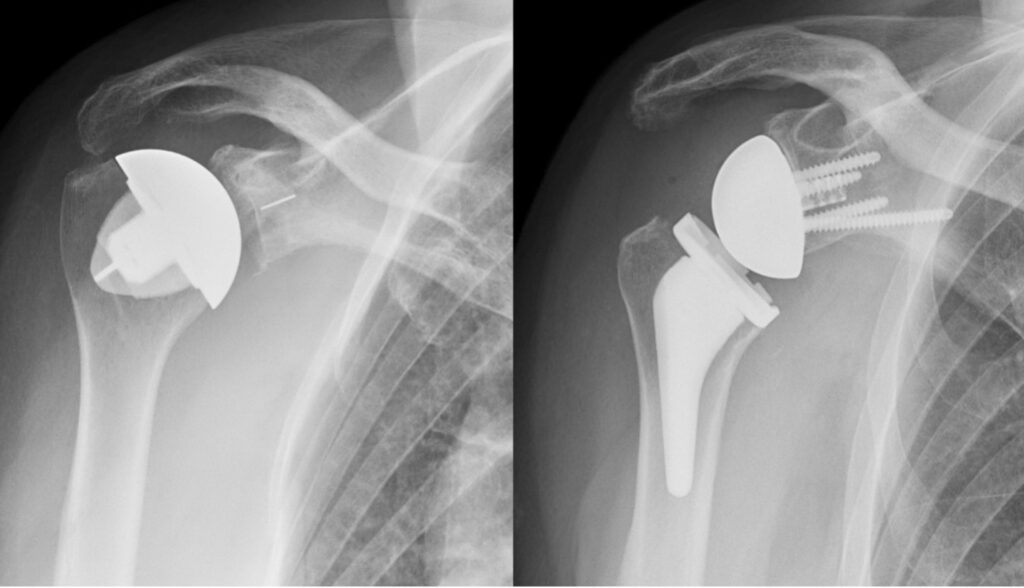The shoulder is a ball and socket joint. A reverse shoulder replacement reverses the ball and socket. You can see that on the x-ray below:

Whether a patient is a candidate for a reverse shoulder replacement primarily depends on the integrity of the rotator cuff muscles. If it is, an anatomic total shoulder replacement is usually most appropriate. If not, then a reverse shoulder replacement may be the best option.
How Effective Are Reverse Shoulder Replacements?
Reverse shoulder replacements are very effective. Overall, patient satisfaction following either a reverse or anatomic shoulder replacement is extremely high.
Understanding which patients might benefit most from a reverse shoulder replacement is something that a trained shoulder specialist can help with. The shoulder is a complex joint, and a reverse shoulder replacement is not appropriate for everybody.
If you think you might be a candidate for a reverse shoulder replacement, it’s a good idea to see a shoulder specialist. Being able to go through various treatment options with someone who treats the whole spectrum of shoulder disorders will lead to improved outcomes.
How Long Is Recovery From Reverse Shoulder Replacement?
The recovery from a reverse shoulder replacement tends to be a little bit quicker than an anatomic replacement early on. Most patients are typically only in a sling for 1-2 weeks after surgery, with full, unrestricted range of motion after that. Full recovery takes a few months.